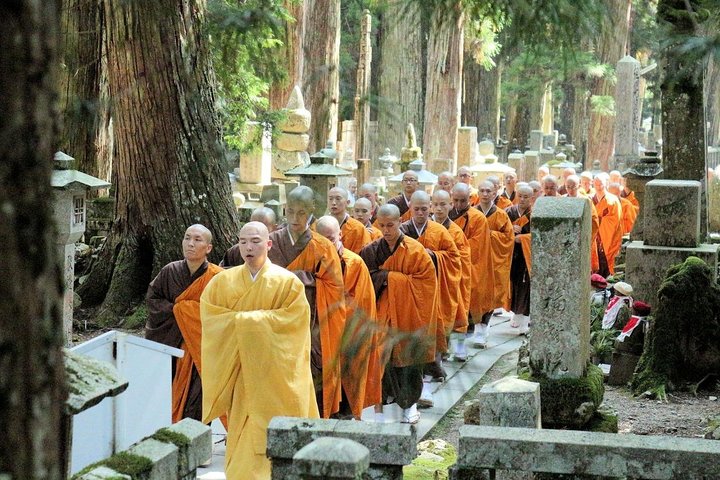Exploring the Spiritual Heart of Japan: A Journey to Mt. Koya
Drawn by the allure of Mt. Koya’s spiritual heritage, I embarked on a journey to explore the heart of Shingon Buddhism. Guided by the knowledgeable Mr. Okazaki, I discovered the profound beauty and cultural richness of this sacred mountain.
Journey to the Heart of Shingon Buddhism
As I embarked on the Mt. Koya Sacred Tour, I was filled with anticipation. The allure of Mt. Koya, a UNESCO World Heritage Site, had long intrigued me. Known as the heart of Shingon Buddhism, this sacred mountain promised a journey through time, spirituality, and culture. My guide, Mr. Okazaki, met me at my hotel in Osaka, and together we navigated the train and cable car to reach the mountain. The journey itself was a gentle reminder of the balance between modernity and tradition that defines Japan.
Upon arrival, the crisp mountain air and the serene landscape enveloped us. Our first stop was the Koyasan Okunoin, the resting place of Kobo Daishi, the revered founder of Shingon Buddhism. Walking through the ancient graveyard, lined with towering cedar trees, I felt a profound sense of peace. Mr. Okazaki shared stories of the historical figures whose graves we passed, weaving a tapestry of Japan’s rich religious history. Despite the complexity of the religious statues, his insights into the cultural significance of the site were enlightening.
Exploring the Sacred Temples
Our next destination was the Kongobu-ji Temple, the main headquarters of the Shingon Sect. As we entered, the beauty of the fusuma sliding door paintings and the meticulously designed rock garden took my breath away. The garden, representing two dragons soaring through the clouds, was a masterpiece of Zen design. Mr. Okazaki explained the symbolism behind the art, offering a glimpse into the spiritual teachings of Shingon Buddhism.
The temple’s atmosphere was one of reverence and tranquility. As we wandered through its halls, I couldn’t help but reflect on the dedication and artistry that had gone into its creation. The temple stands as a testament to the enduring legacy of Kobo Daishi and the spiritual path he forged. Though Mr. Okazaki’s knowledge of the religious statues was not exhaustive, his passion for sharing the cultural heritage of Mt. Koya was evident.
A Cultural Treasure Trove
Our final stop was the Koyasan Reihokan Museum, a treasure trove of religious and cultural artifacts. The museum’s collection, ranging from statues to mandalas, offered a deeper understanding of the spiritual and artistic traditions of the region. The highlight for me was the scroll depicting the “Reclining Image of Sakyamuni Buddha on His Last Day,” a poignant reminder of the impermanence of life.
As we concluded our tour, I felt spiritually uplifted and culturally enriched. The Mt. Koya Sacred Tour had been more than just a journey through a sacred mountain; it was an exploration of the soul of Japan. Mr. Okazaki’s warmth and dedication made the experience all the more memorable. For anyone seeking a deeper connection with Japan’s spiritual heritage, Mt. Koya is a destination not to be missed.








































